
I came across Montessori education when I was doing some research about toys. After our baby was born, I was unsure what kind of toys I should give him.
Even though I was not aware of Montessori at the time, naturally, I was not comfortable giving flashing lights or battery-powered toys. I knew it was not going to help the baby’s development.
Also, I want our baby to be independent, a problem solver, self-motivated. And I want to help him develop a set of skills. Therefore I have started researching toys that give skills, teach independence, and are not powered by batteries.
When I find information about Montessori, it immediately resonates with me and satisfies my needs. After that, I have read books about it and learned that it is an educational approach and possible to implement it at home. I have also discovered there are Montessori schools that follow its philosophy.
What I really like about it is that it is quite natural for both parents and children. It is very much related to the real world and very practical.
Even if it is impossible to send a child to a Montessori school (the option might not be available for many of us), it can be done at home and teach our children from day one.
Here in this post, I will cover what Montessori is and its philosophy, why we choose it, and how you can implement it at home. I hope you will find it helpful.
What is Montessori?
Montessori is a child-focused educational approach named after Dr. Maria Montessori, an Italian physician, developed for educating children in the early 1900s.
Dr. Maria Montessori opened the first Montessori school, the Casa dei Bambini, or Children’s House, in 1907. Subsequently, she traveled the world and wrote extensively about her approach to education, attracting many followers.
As per the American Montessori Society, in the US alone, approximately 5,000 Montessori schools now serve over one million children from infancy through adolescence. Thousands of more schools exist worldwide.
What is Montessori’s Philosophy?
“Free the child’s potential, and you will transform him into the world.”
– Maria Montessori
Montessori’s philosophy is nurturing each child’s natural desire for knowledge, understanding, and respect.
It is a practice that fosters rigorous, self-motivated growth for children and adolescents in all areas of their development.
Montessori has a set of principles to achieve its goal. Let’s see some of the basic principles below:
What are Montessori’s Principles?
Observation – “follow the child.”
Simply observing or watching the children explore the environment is key to understanding children’s needs.
Follow the child, they will show you what they need to do, what they need to develop in themselves, and what area they need to be challenged in. The aim of the children who persevere in their work with an object is certainly not to “learn”; they are drawn to it by the needs of their inner life, which must be recognized and developed by its means.”
– Maria Montessori
Observation or “follow the child” doesn’t mean we let the children be 100% by themselves and do nothing. Parents or teachers need to observe or “follow the child” to fulfill the child’s needs.
For example, if the child crawls to the stairs, turns to you, and shows a sign for help, teach them to come down the stairs or to hold onto a low rail.
Whenever parents or teachers teach children a skill, first show them how to do it, explain, and teach them by being an example. And repeat until they master it. Never do tasks for them or give unnecessary help.
Of course, we have to help them when they’re in danger. One of the things we can do to make children safe is by creating a child-friendly environment. This takes us to the next Montessori principle – an organized environment.
Organized Environment
Montessori encourages an environment with structure and order plus beauty.
Even babies or infants are whole human beings absorbing every sight, sound, smell, and touch that they experience.
Therefore an organized environment (house or classroom) will help them for their experiential learning.
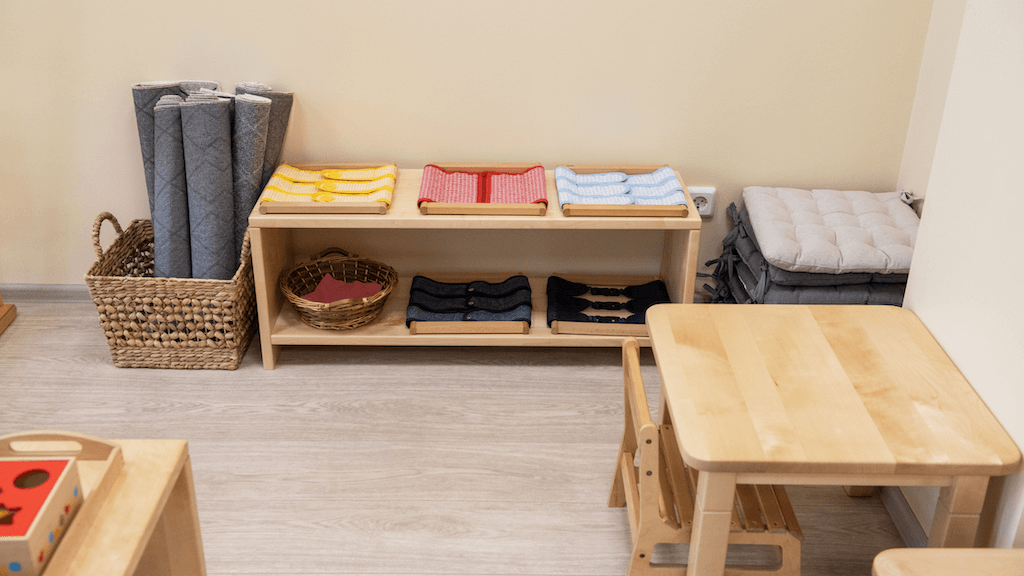
Freedom to Learn
The Montessori environment gives children freedom of movement and freedom of choice, which foster intrinsic motivation. Intrinsic motivation is the act of doing something without any external rewards.
In a Montessori environment, children do what they need to do because it’s enjoyable and exciting, rather than outside incentives or pressure to do it.
When the children are free to move and choose, they learn from the experience.
“And so we discover that education is not something which the teacher does, but that it is a natural process which develops spontaneously in the human being. It is not acquired by listening to words, but in virtue of experiences in which the child acts on his environment.”
– Maria Montessori
In a Montessori classroom, things are intentionally prepared with only one of each activity.
Children are free to choose the activity they wish to work with. So they learn to make choices based on what they are interested in and available.
Independence – “Help me to do it myself.”
“Never help a child with a task at which he feels he can succeed.”
– Maria Montessori
One of the goals from the way of Montessori learning is independence.
A Montessori classroom is prepared carefully to allow the child to work independently and allow for the joy of self-discovery.
Parents and teachers only need to introduce material or show examples to children to do it themselves. Doing tasks for the child is never appreciated.
Respect
If you want your child to respect you, you have to respect your child first. Children learn better by example rather than order.
“Children are human beings to whom respect is due, superior to us by reason of their innocence and of the greater possibilities of their future.”
Maria Montessori
Why Choose Montessori?
As I mentioned above, we have found Montessori natural, practical, and valuable for child development. It is parallel with the goal we have for our baby, which is independence, freedom, respect, and problem-solving skills.
Again the fact that we can implement it at home encourages and gives us opportunities to help our baby explore his environment in our daily life.
Therefore we try to create a friendly environment at home. We got a Montessori based play kit subscription (if you would like to read about it, I have reviewed here the play kit we have a subscription for our baby)
So far, we have seen excellent results in our baby development because of Montessori approaches. For example, he feeds himself, communicates and engages well, has outstanding fine and motor skills at the age of one.
How to Implement Montessori at Home
Montessori is very much related to real-life experience, making it easier to implement it at home.
Some of the helpful tips to implement it at home are:
Make Yourself Familiar with It
First, it is essential to make yourself familiar with Montessori principles. Reading books or even a blog post like this or watching videos will help.
Prepare Your Home
To assist a child, we must provide him with an environment, which will enable him to develop freely.
Maria Montessori
Simplifying the environment at home and making it child-friendly will help the child explore the environment and interact easily.
We have to look at the environment from our children’s perspective. Children could easily be frustrated in the adult world, so we shall have child-size natural materials at home.
Have small utensils for feeding and small glass cups for drinking. Choose low height shelves for toys. Or even a small broom for teaching them how to clean the house are a few examples you can have at your home for your child.
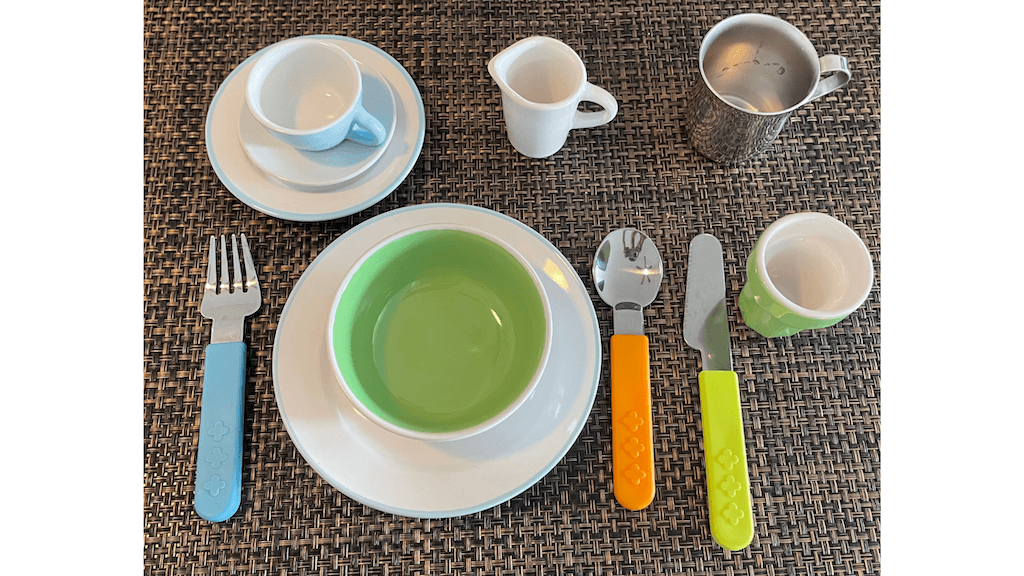
Giving toys that are Montessori aligned will help as well. Below there is a section for characteristics of Montessori-aligned toys to help you choose the right toys for your child.
Start Applying Montessori Principles
You can start by observing your child, understanding your child’s needs, and gradually applying the other principles.
You don’t have to do it all at once. If you provide the environment, start observing or “follow the child,” and respect the little human being, it would do a lot.
Nurture Inner Motivation
Children are most willing to apply themselves when they feel there is intrinsic value to their work. We parents should not use external rewards such as an allowance or gold stars.
We shall give praise to acknowledge a child’s effort and encourage dedication and commitment to accomplishing a task, rather than the outcome of the work.
By expressing encouragement and appreciation for your children’s efforts at home, you will help nurture an inner motivation that will serve them for life.
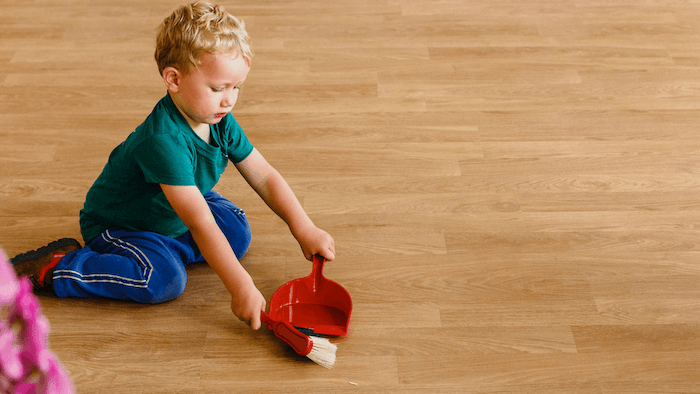
Characteristics of a Montessori-aligned Toys
It Bases on Real-life and Made of Natural Materials
Naturally, children are attracted to their physical surroundings. Giving toys representing real-life, like books that feature actual images of people, animals, and objects, will help them experience the real world.
Toys made of natural materials like rubber, wood, stainless steel, or fabric help children explore the difference in texture, temperature, weight, color, etc.
These natural materials create a sensory-rich learning experience that allows children’s brains to translate a world filled with possibilities into concrete skills.
Doesn’t Have Electronics or Flashing Light
Electronic and flashing light toys make the children passive, not active because they are battery-powered.
Whereas Montessori’s wood or stainless steel toys allow the child to play actively, that helps develop sensory and motor skills.
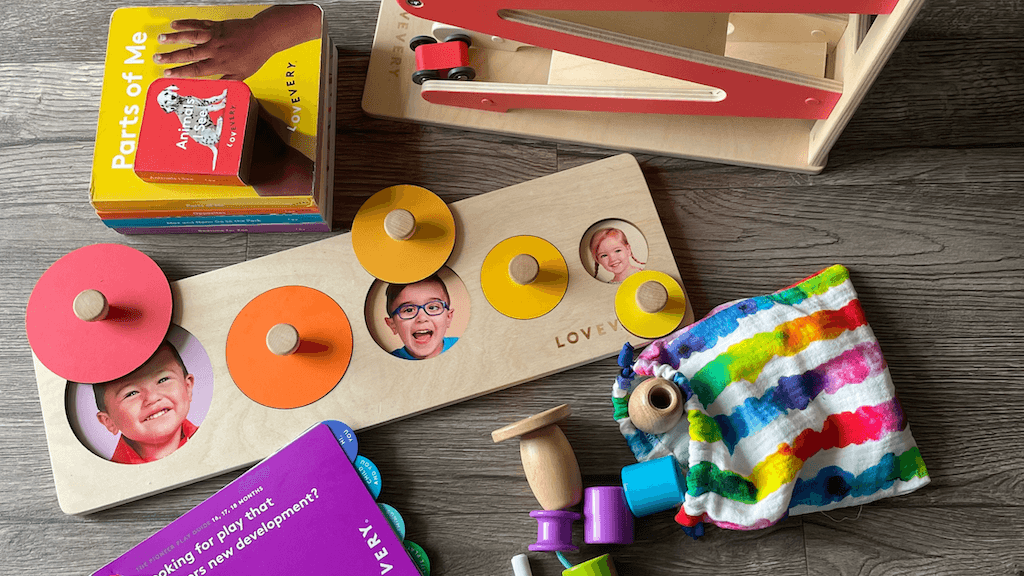
Focus on Skill
As said above, Montessori toys make the children active, focus on one skill at a time, and encourage them to try something with their hands, which helps them concentrate and learn.
Finally, I would love to say our children are much more capable than we think. When we stop freaking out and micromanaging them, they flourish as productive, independent, self-motivated, and resilient human beings.
I do not consider myself an expert or very experienced parent in implementing Montessori.
However, I have noticed tremendous development in our baby in just his first year. It encourages me to wake up every day and try my best to incorporate Montessori’s philosophy in our daily life. Also, it is what gives me the courage to share it with all of you.
So, have you been familiar with Montessori before? Do you like the approach? Would you consider implementing it at your home? Would you like me to prepare more content about it? Let me know in the comment below.
Bonus: More Resources
Books:
- Dr. Montessori’s own handbook, by Maria Montessori
- How to raise an amazing child the Montessori way, by Tim Seldin, president of The Montessori Foundation
Online Resources:
- American Montessori Society. www.amshq.org
- The Montessori Foundation. www.montessori.org
ምንጭ:-
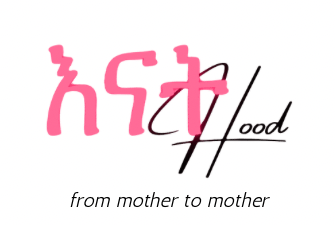

 በሳይንስ የተደገፈ አስገራሚ የእናት ጡት ወተት ጥቅሞች ለህፃናት
በሳይንስ የተደገፈ አስገራሚ የእናት ጡት ወተት ጥቅሞች ለህፃናት
Hello!
I really like the topic you mention in your blog. They are just enough to read, interesting and educational. Thank you for sharing your experience and knowledge.
Thank you, Amy.
I know you like practical topics like Montessori. And I am glad you like it.
I like this topic because I saw the name Montessori passing by or heard of it from a friend but I really never knew the philosophy behind it so now I know enough to even read about it more thanks to your blog
Thank you, Miri.
I will have more content about Montessori then.
This is just excellent. Thank you for this wonderful input.
Thank you, Rekikyee.
I am glad you find it helpful.
Love love this! Well done!
Bethelehem (mar ena wotetay)
Thank you Beti!!
I am glad you liked it.
As always i love and appreciate what you do and your passion, this one is just wonderful 👌.well done!!
Thank you Mismakyee!
I am glad you like the Montessori education article.